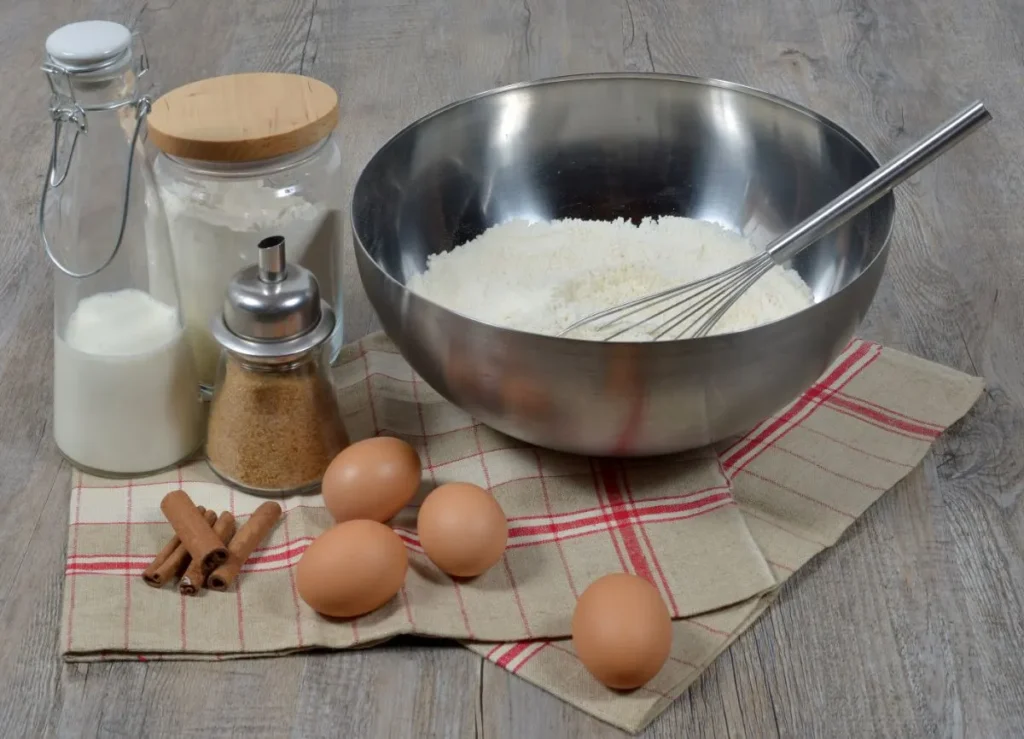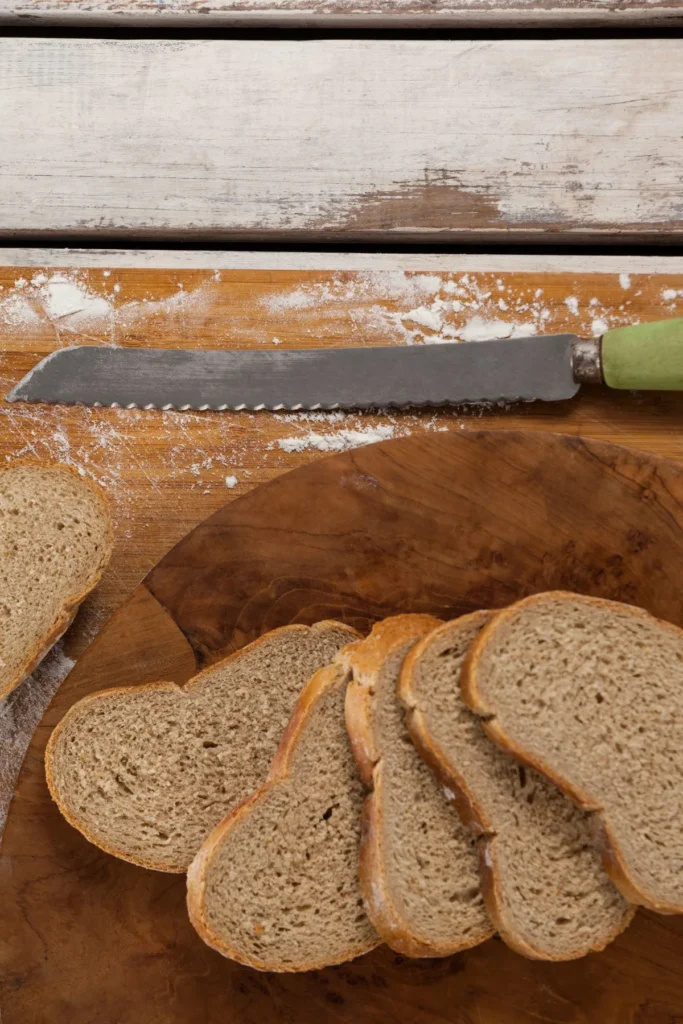Discover how to make perfect sourdough French toast with step-by-step guidance, flavor variations, and expert tips.
Introduction
When it comes to creating a truly memorable breakfast, few dishes can rival the comforting allure of French toast. However, a small change in one key ingredient can elevate this familiar favorite into something extraordinary. Using tangy, artisan sourdough bread transforms a classic recipe into an unforgettable brunch centerpiece. In addition, sourdough French toast is about more than just taste. Its remarkable texture, rich flavor nuances, and wholesome preparation techniques also offer a more elevated eating experience. Therefore, home cooks looking to refine their breakfast or brunch routine can turn to this sourdough variation for a delightful, nutritious, and crowd-pleasing meal.
In this guide, we will explore every detail you need to know to perfect sourdough French toast. We will discuss why sourdough bread works so well, break down essential ingredients, walk through a foolproof recipe, and offer creative ideas for toppings, plating, and even dietary adaptations. Moreover, by understanding the history, cooking techniques, and troubleshooting tips, you will gain the confidence to prepare this dish with ease and enthusiasm. Whether you are hosting a weekend brunch, creating a family breakfast tradition, or simply craving a comforting meal, sourdough French toast will not disappoint.
Table of Contents
Understanding Sourdough Bread for French Toast
Sourdough bread is not just another loaf on your grocery list. Rather, it is the result of a natural fermentation process that takes simple flour and water and transforms it into something vibrant, tangy, and bursting with complex flavors. Therefore, using sourdough bread for French toast imparts a distinctive, lightly sour taste and chewy texture that sets it apart from conventional bread.
What Makes Sourdough Bread Different
Unlike breads made with commercial yeast, sourdough uses a starter—naturally occurring wild yeasts and beneficial bacteria—to leaven the dough. This natural process enhances the bread’s digestibility and nutrient profile. In addition, sourdough’s characteristic open crumb structure helps it soak up the custard mixture evenly. As a result, each bite of sourdough French toast becomes delightfully custardy on the inside and gently crisped on the outside.
Flavor and Texture Advantages
Sourdough bread delivers a gentle tanginess that complements the sweetness of your chosen toppings. Therefore, when you pair it with warm maple syrup or fresh fruit, you achieve a balanced flavor that never becomes cloying. The firm, sturdy texture of sourdough ensures each slice holds its shape after dipping, resulting in perfectly crisp, golden-brown edges. In comparison to softer breads, sourdough stands up beautifully, making it an ideal choice for French toast.
A Brief History and American Brunch Culture
French toast has roots stretching back to ancient times, yet its evolution in the United States is where it truly blossomed. Originally made as a way to use stale bread, French toast became popular in diners and weekend brunch spots across the country. As American culinary interests expanded, artisan breads like sourdough gained attention. Today, sourdough French toast aligns seamlessly with a brunch culture that values quality ingredients, local sourcing, and artisanal craftsmanship.
Key Ingredients for Sourdough French Toast
Creating sourdough French toast does not require a long list of expensive ingredients. Instead, it calls for quality basics that you may already have on hand. However, paying attention to these details helps elevate the final result.
Choosing the Right Sourdough Bread
To achieve the best texture, select a loaf with a tight, chewy crumb. Day-old sourdough works exceptionally well because it slightly dries out, allowing it to soak up the custard without becoming overly soggy. In addition, aim for medium-thick slices (about 1 inch) to strike a perfect balance between crisp exterior and tender interior.
Eggs and Dairy
Eggs provide richness and structure, while milk (or a dairy alternative) lends creaminess. Therefore, use fresh, high-quality eggs and whole milk or a rich plant-based milk (like oat milk) for optimal flavor. Consider adding a touch of cream for an even more indulgent custard base.
Sweeteners and Spices
Subtle hints of sweetness enhance sourdough French toast. A small amount of sugar, maple syrup, or honey in the custard can round out the tanginess of the bread. In addition, a dash of cinnamon, vanilla extract, and a pinch of salt add depth and aroma, ensuring each bite sings with flavor.
Butter or Oil for Cooking
Butter adds richness and helps achieve that classic golden-brown crust. However, if you prefer a higher smoke point, consider using a neutral oil. In addition, you can blend butter and oil for the best of both worlds—deep flavor and beautiful browning.
Step-by-Step Sourdough French Toast Recipe

Before starting, prepare your cooking space. Have all ingredients ready and your skillet preheated. In addition, ensure that the sourdough bread is sliced and slightly dry for better custard absorption.
Ingredients (per 4 servings)
- 8 slices of sourdough bread (about 1-inch thick)
- 3 large eggs
- 1 cup whole milk (or oat milk)
- 1 teaspoon pure vanilla extract
- 2 tablespoons granulated sugar (or 1 tablespoon maple syrup)
- 1 teaspoon cinnamon (optional)
- Pinch of salt
- 2 tablespoons unsalted butter (for cooking)
Expanded Instructions
- Prep the Bread:
Slice the sourdough bread into thick, even slices. If the bread is fresh, let the slices sit out for 30 minutes to slightly dry. This step helps prevent sogginess. - Make the Custard Mixture:
In a wide, shallow bowl, whisk together the eggs, milk, vanilla extract, sugar (or maple syrup), cinnamon, and salt. Whisk until the eggs are fully incorporated and the mixture appears uniform. - Soak the Bread:
Working with one or two slices at a time, dip the bread into the custard mixture. Allow each slice to sit for about 15–20 seconds on each side. Do not over-soak, or the bread may become too soft. The goal is for the custard to penetrate just enough to flavor the bread without making it mushy. - Preheat the Skillet:
Place a large non-stick skillet or griddle over medium heat. Add a tablespoon of butter and let it melt, coating the surface evenly. If you find that the butter browns too quickly, you can add a small amount of neutral oil. - Cook the French Toast:
Carefully lay the soaked slices onto the hot surface, ensuring they do not overlap. Cook for about 3–4 minutes on the first side, or until the bottom is golden brown. Use a spatula to flip the slices gently, then cook the other side for an additional 2–3 minutes. Adjust the heat as needed to prevent burning. - Serve Hot:
Once both sides are beautifully browned, transfer the French toast slices to a warm plate. Continue cooking the remaining slices, adding more butter as needed. Keep the finished French toast warm in a low oven (around 200°F) until ready to serve.
Variations and Flavor Twists for Sourdough French Toast

Beyond the classic version, sourdough French toast invites endless creativity. Therefore, consider experimenting with unique flavor combinations and seasonal ingredients.
Fruity and Sweet Accents
Top your French toast with fresh berries, sliced peaches, or baked apples for natural sweetness and bright flavors. In addition, a drizzle of pure maple syrup or honey can tie everything together. For those with a sweet tooth, a dollop of whipped cream or a sprinkle of powdered sugar adds a decadent touch.
Nutty Textures
Add crunch and subtle earthiness with a handful of toasted almonds, walnuts, or sunflower seeds. For extra complexity, consider a sprinkle of chia or flax seeds.
Savory and Herbal Notes
Infuse your custard mixture with a pinch of dried herbs like rosemary or thyme to bring unexpected depth. In addition, serve your toast alongside something hearty like roasted vegetables, or pair it with plant-based sausages for a savory twist that contrasts beautifully with the sweet toast.
Global Inspirations
Give your French toast an international flair by adding spices like cardamom or nutmeg. Moreover, consider garnishing with tropical fruits such as mango or passion fruit. These changes keep the meal fresh and exciting, encouraging you to return to this dish again and again.
Serving Suggestions and Pairings
Sourdough French toast deserves careful presentation. By planning your sides and beverages thoughtfully, you will create a complete meal that everyone will love.
Toppings and Garnishes
A simple pat of butter and warm maple syrup can never fail. However, fresh berries, banana slices, or a quick fruit compote can elevate both the appearance and taste. For a creamy finish, add a spoonful of Greek yogurt or dairy-free coconut yogurt, which helps balance sweetness and provide a protein boost.
Accompaniments
For a well-rounded meal, consider pairing your French toast with a fruit salad or a side of roasted sweet potatoes. In addition, a fluffy egg-based dish like a savory frittata can complement the slightly sweet notes of your French toast. Try serving it alongside our Egg White Frittata Recipe for a protein-packed breakfast that highlights contrasting flavors and textures.
Beverages
Warm coffee, tea, or even a naturally sweetened fresh-pressed juice pairs well with sourdough French toast. Therefore, keep it simple and let the main dish shine without overpowering flavors.
Sourdough French Toast for Special Diets
Adapting sourdough French toast to various dietary needs is quite simple. Therefore, everyone can enjoy this dish regardless of their restrictions.
Gluten-Free Options
For those who avoid gluten, look for a certified gluten-free sourdough loaf made from rice, teff, or millet. These breads can still provide a similar tangy flavor and sturdy texture.
Dairy-Free and Vegan Alternatives
Replace the milk with almond, oat, or coconut milk. In addition, consider using ground flaxseed mixed with water or a commercial egg replacer to create a vegan-friendly custard. Plant-based margarines or neutral oils can stand in for butter.
Reduced Sugar or Sugar-Free Variations
Opt for unsweetened plant-based milk and skip the added sugar, relying on the bread’s natural flavors. Instead of syrup, top your French toast with a spoonful of warm berries to add natural sweetness.
Presentation and Plating Tips
The saying “we eat with our eyes first” holds true, especially for a brunch dish.
Visual Appeal
Stacking two or three slices of sourdough French toast on a plate creates height and dimension. In addition, adding colorful fruits and a light dusting of powdered sugar creates contrast and visual excitement. Serving the toast on a wooden board or a white plate highlights its warm, golden tones.
Simple Add-Ons
Top with a few sprigs of fresh mint or a twist of orange zest for a pop of color and aroma. Therefore, even the simplest additions can transform your dish into a restaurant-quality presentation at home.
Troubleshooting Common Issues
Sometimes, French toast might not turn out exactly as planned. However, these tips will help you adjust and perfect your dish.
Avoiding Soggy Texture
If your French toast is soggy, reduce the soak time. In addition, slightly stale bread absorbs custard more manageably, preventing an overly soft texture.
Achieving the Perfect Crisp
If your toast remains pale or soft, increase the heat slightly and cook a bit longer. However, watch carefully to prevent burning. Adjusting the temperature and cooking time ensures a crispy, pleasing crust.
Boosting Flavor
If the flavor seems bland, add a pinch more salt, cinnamon, or vanilla to the custard. In addition, consider topping with a bolder syrup or fresh fruit that brings a burst of brightness.
Make-Ahead, Storage, and Reheating Tips
Preparing sourdough French toast in advance can save time, especially for busy mornings.
Pre-Soaking and Refrigeration
You can soak your bread slices in the custard mixture the night before. Cover and refrigerate them. In the morning, you will only need to cook them, resulting in an effortless breakfast.
Freezing and Reheating
Cook an extra batch and freeze the cooled slices in a single layer before transferring them to a freezer-safe container. To reheat, place them in a toaster oven or warm oven until heated through. Therefore, you can enjoy fresh-tasting French toast any day of the week.
Beyond Breakfast: Creative Uses for Leftover Sourdough French Toast
If you have leftover slices, do not let them go to waste.
Sweet Bread Pudding
Cut the leftover toast into cubes and bake it into a comforting bread pudding. In addition, add fruits and spices for a delightful dessert or snack.
Quick Snacks
Slice your leftover French toast into sticks and serve them with a yogurt dip or nut butter. These can become easy snacks for kids or busy adults on the go.
Nutritional Information (per 100g)
This approximate nutritional data helps you understand the balance of nutrients in your serving.
| Nutrient | Amount per 100g |
|---|---|
| Calories | ~220 kcal |
| Carbohydrates | ~30 g |
| Protein | ~7 g |
| Fat | ~8 g |
| Fiber | ~2 g |
| Sugar | ~5 g |
| Sodium | ~200 mg |
(Values can vary depending on the specific sourdough bread and ingredient brands used.)
Frequently Asked Questions (FAQ)
Does sourdough taste good for French toast?
Yes. Sourdough’s tangy flavor pairs beautifully with sweet toppings, making it a great choice for French toast. In addition, its sturdy texture prevents sogginess.
Is sourdough or brioche better for French toast?
Both are delicious, but sourdough provides a tangy complexity and a hearty texture. Brioche is richer and sweeter. Therefore, it comes down to personal preference.
Does sourdough bread make good toast?
Absolutely. Sourdough bread has a thick crust and airy crumb, which browns evenly and provides a delightful chewiness when toasted.
What type of bread is best for French toast?
While many breads work well, sourdough stands out for its depth of flavor and structure. In addition, whole-grain, challah, or gluten-free sourdough loaves can also shine.
Conclusion
In conclusion, sourdough French toast offers a delightful twist on a cherished classic. By using bread with a naturally tangy profile, you achieve balanced flavors, a perfect texture, and a dish that stands out at any breakfast or brunch gathering. With the right choice of bread, careful soaking, and mindful cooking, you can master this meal. Moreover, the versatile nature of sourdough French toast encourages you to experiment with flavors, explore dietary adaptations, and treat yourself to a satisfying meal at home.
Try pairing your sourdough French toast with other comforting breakfast favorites. For instance, you could serve it alongside our Protein Pumpkin Muffins Guide or add a sweet side dish inspired by the Ultimate Guide to Mini Donuts for a complete brunch spread.
Enjoy your perfect plate of sourdough French toast, and share it with family and friends—because this dish is truly something worth savoring time and time again.

